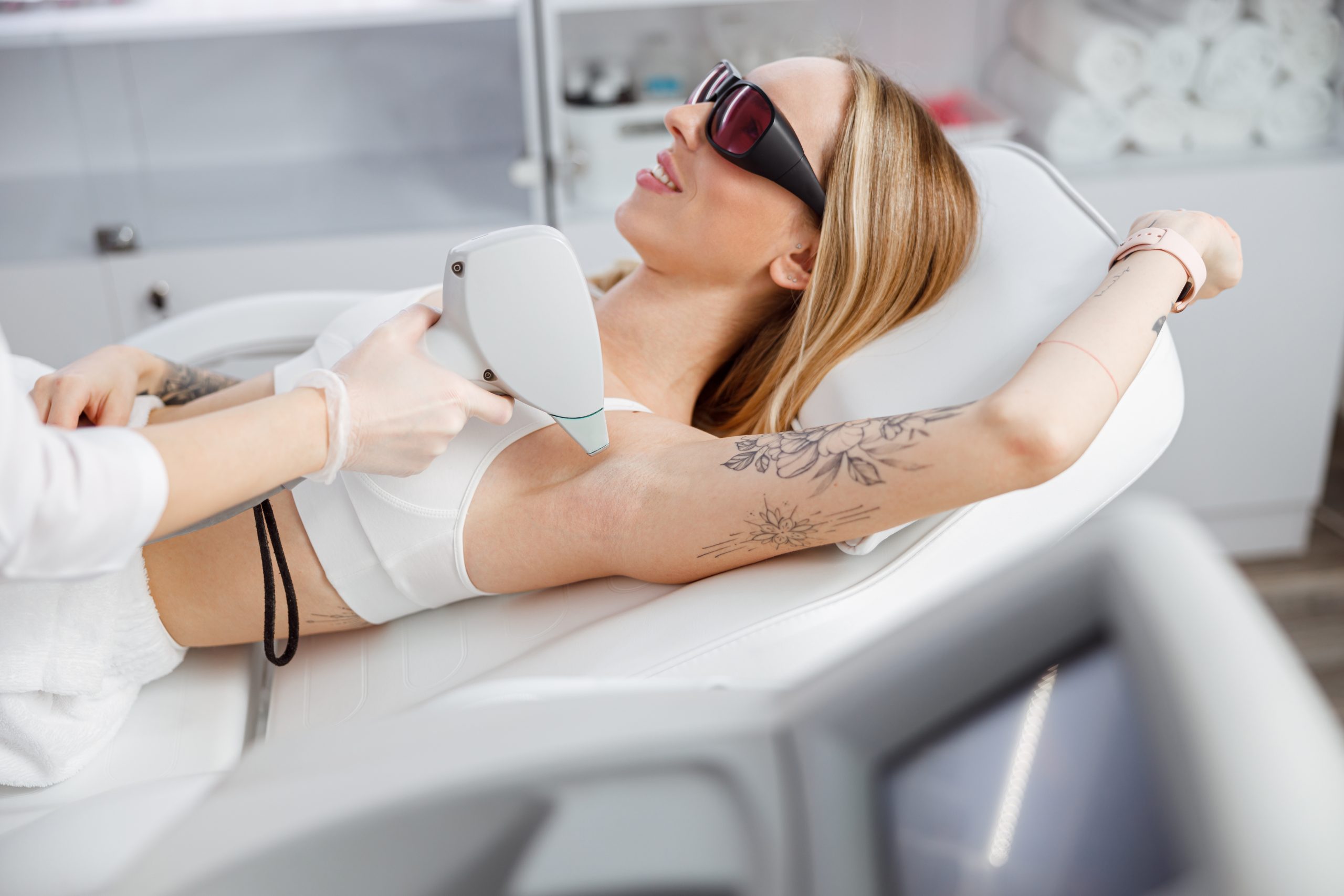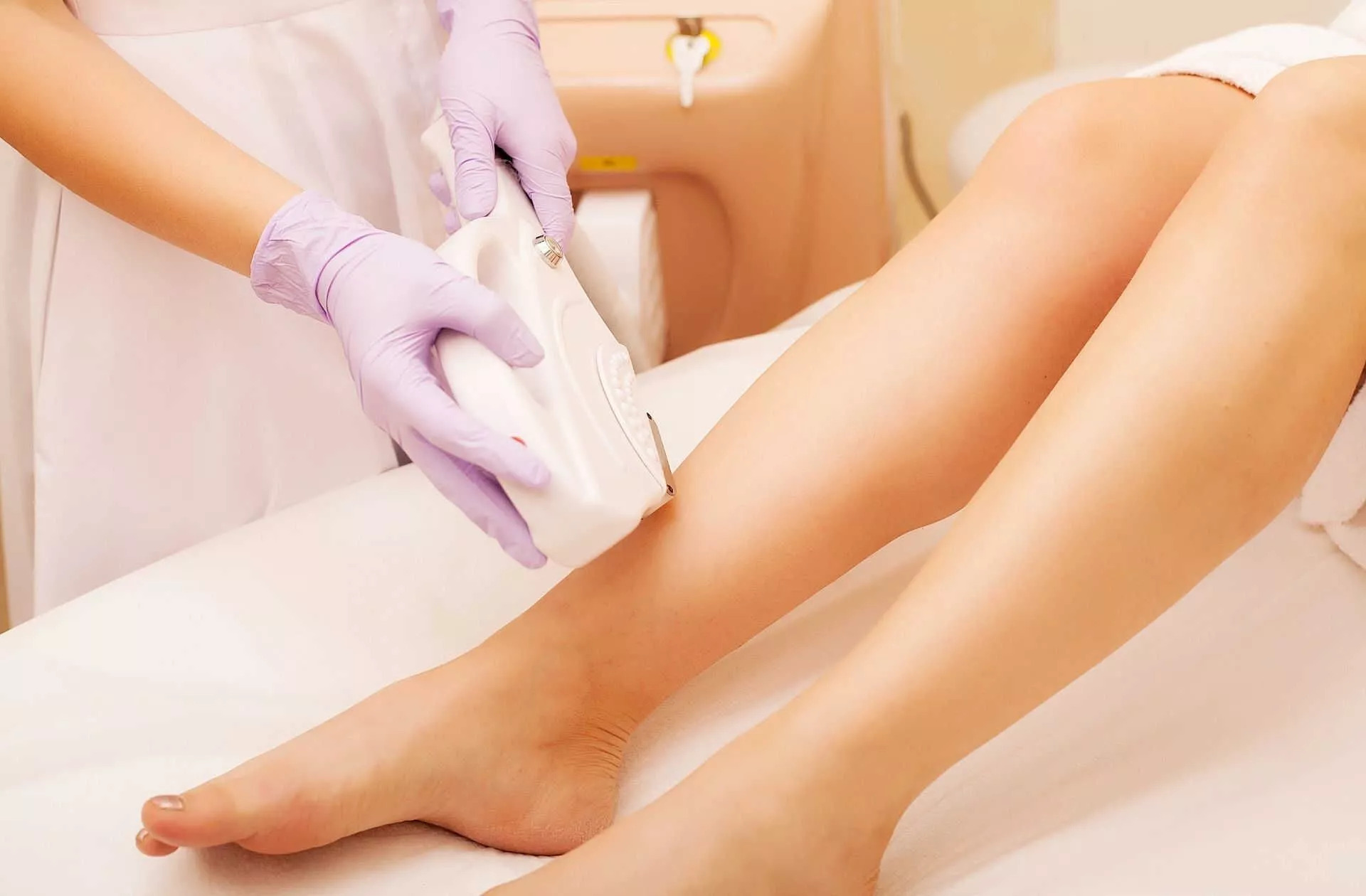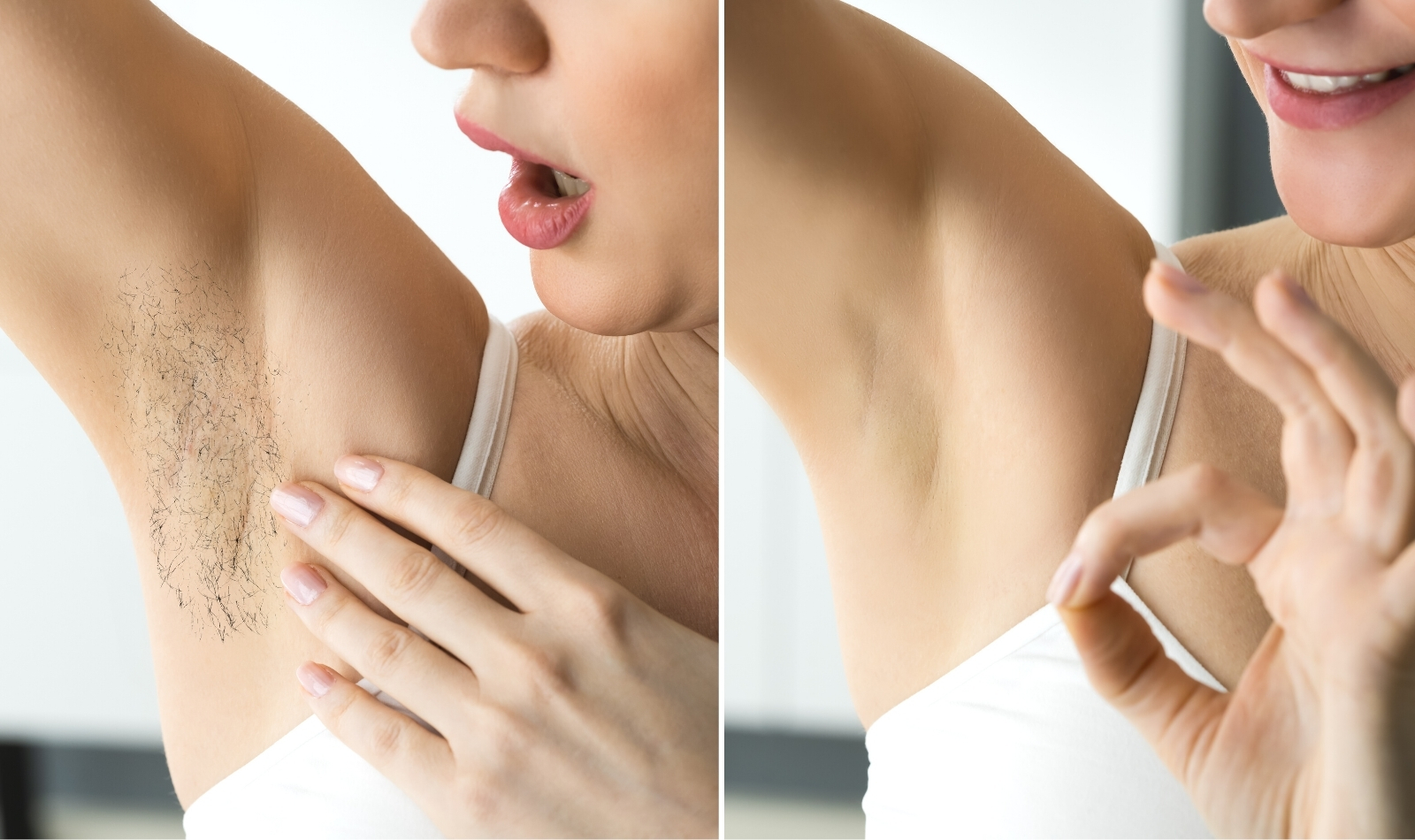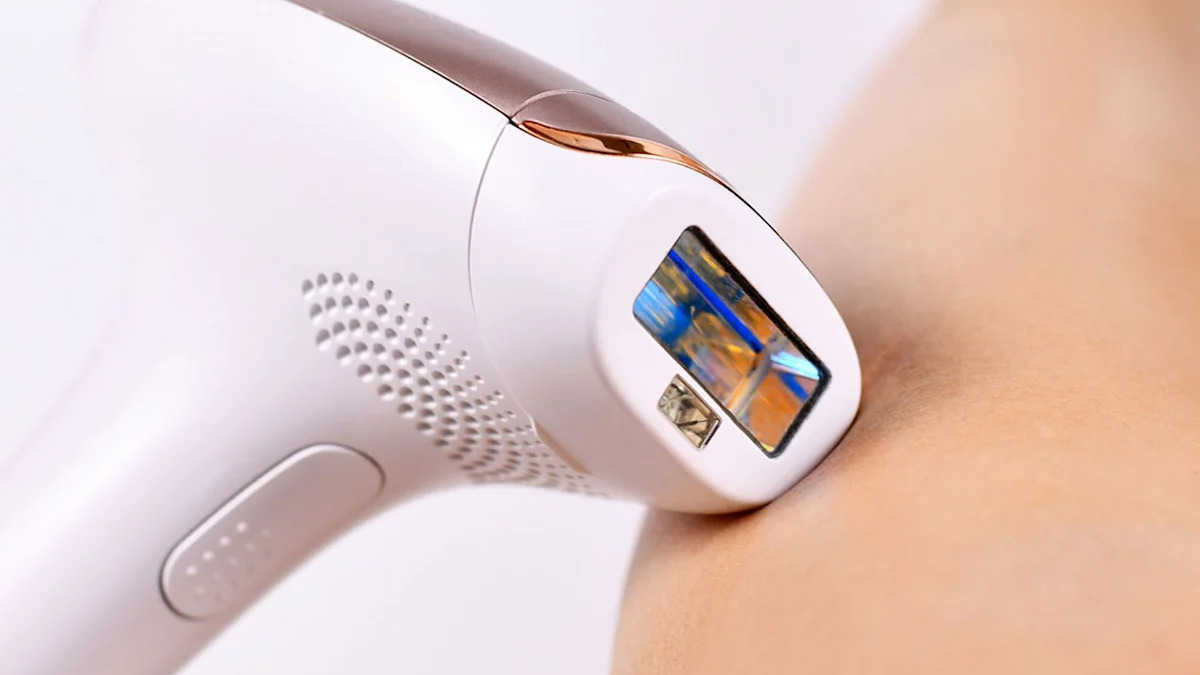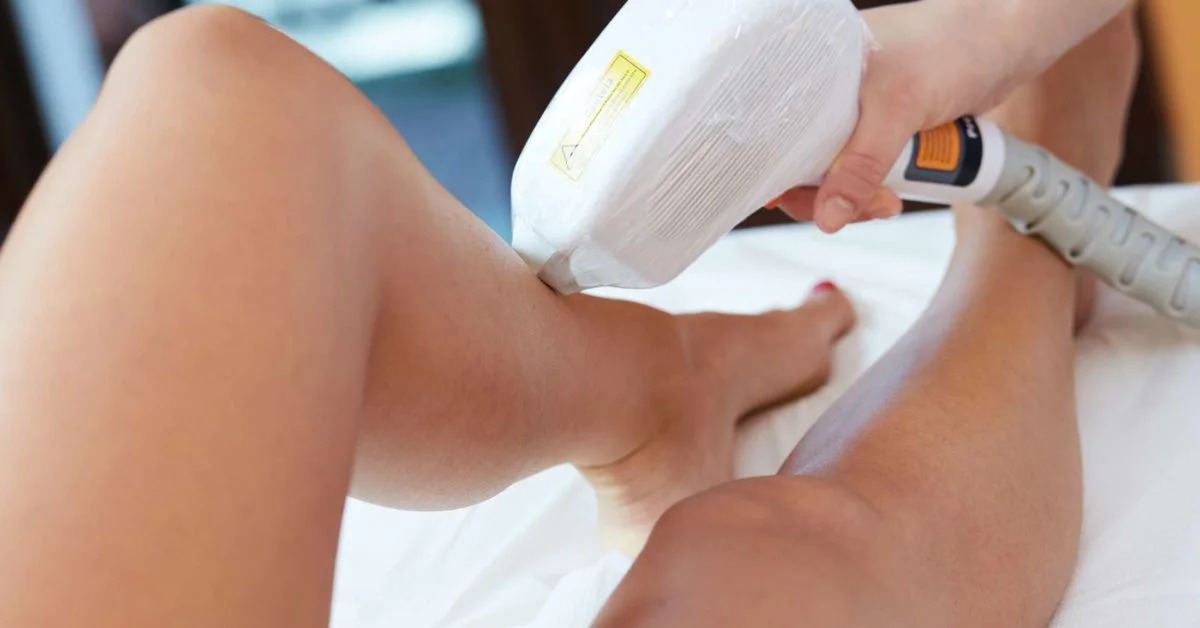Home>FAQs>How Many Sessions Of Laser Hair Removal For Armpits
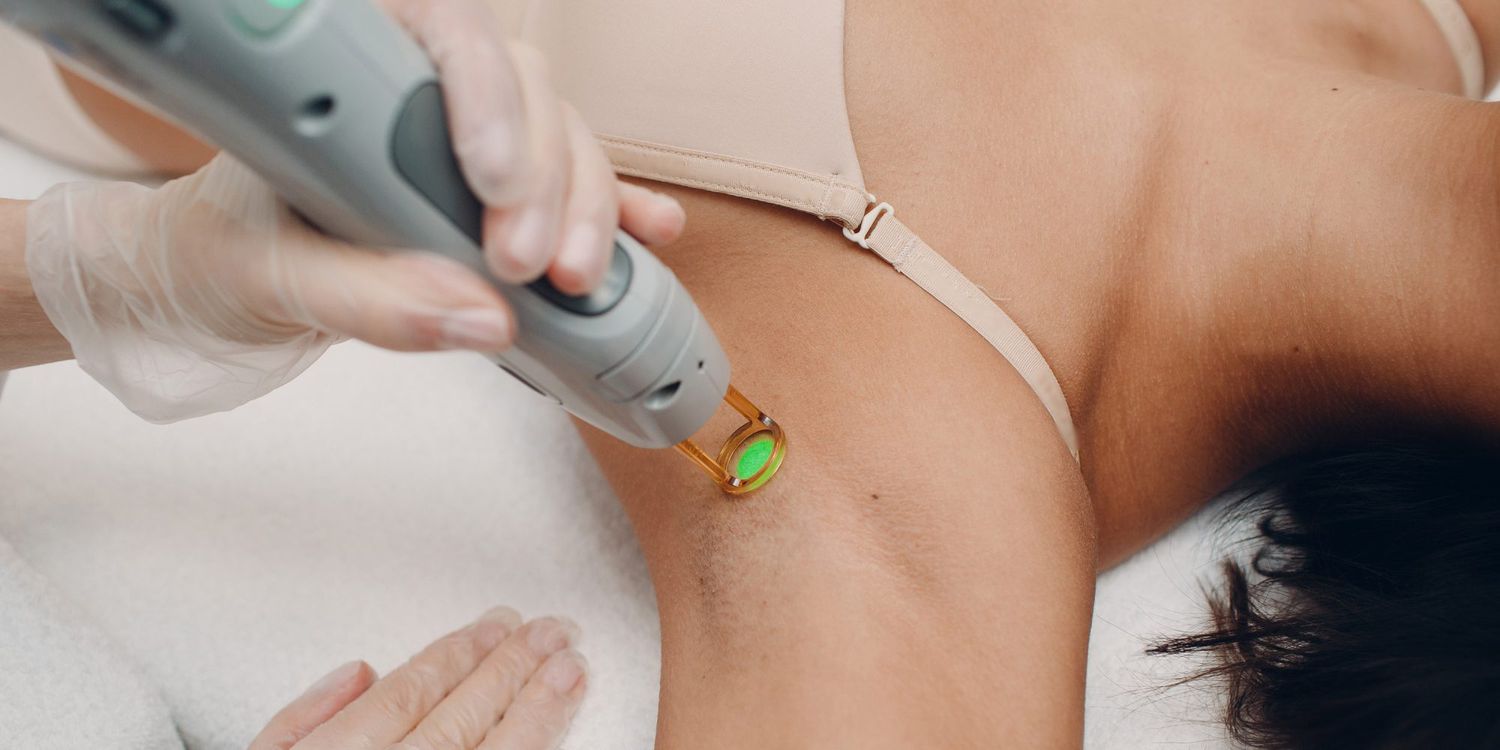

FAQs
How Many Sessions Of Laser Hair Removal For Armpits
Modified: September 23, 2023
Find answers to general questions about laser hair removal for armpits, including how many sessions are typically needed for optimal results.
(Many of the links in this article redirect to a specific reviewed product. Your purchase of these products through affiliate links helps to generate commission for Under-tec.com, at no extra cost. Learn more)
Table of Contents
Introduction
Laser hair removal is a popular and effective method for getting rid of unwanted hair on various parts of the body, including the armpits. It offers a long-lasting solution by targeting the hair follicles with concentrated beams of light, effectively destroying them and inhibiting future hair growth. If you’re considering laser hair removal for your armpits, you may be wondering how many sessions it will take to achieve the desired results.
In this article, we will explore the factors that can affect the number of laser hair removal sessions required for armpit hair removal. We will also discuss the typical number of sessions that are often recommended, as well as possible side effects and risks associated with the procedure. Additionally, we will provide some tips for preparing for laser hair removal and taking care of your skin post-treatment.
It’s important to note that everyone’s experience with laser hair removal may vary, as multiple factors can influence the outcome. Understanding these factors can help set realistic expectations and ensure a successful hair removal journey.
How Does Laser Hair Removal Work?
Laser hair removal works on the principle of selective photothermolysis. The laser emits a specific wavelength of light that is absorbed by the pigment (melanin) present in the hair follicles. As the light is absorbed, it is converted into heat, which damages the hair follicles, inhibiting their ability to produce new hair.
The process begins with the laser technician applying a cooling gel to the treatment area to protect the surrounding skin and enhance the effectiveness of the treatment. The laser device is then moved over the skin, delivering pulses of light to each hair follicle. The light is attracted to the dark pigment of the hair, heating it up and damaging the hair follicle without causing harm to the surrounding skin.
It’s important to note that laser hair removal is most effective on dark hair and fair skin, as the contrast between the hair and skin color allows the laser to precisely target the hair follicles. However, advancements in technology have made it possible to perform laser hair removal on a wider range of skin tones.
Laser hair removal is a gradual process that requires multiple sessions to achieve the desired results. This is because hair grows in different phases, and the laser can only effectively target hair follicles during the active growth phase, known as the anagen phase. Therefore, multiple treatments are necessary to catch as many hair follicles as possible in the anagen phase.
It’s important to note that laser hair removal does not provide permanent hair removal, but rather long-lasting hair reduction. Over time, some hair follicles may become active again, leading to new hair growth. However, the regrowth is usually lighter and finer, making it less noticeable and easier to manage.
Factors Affecting the Number of Sessions
The number of laser hair removal sessions required for effective armpit hair removal can vary from person to person. Several factors influence the success and timeline of the treatment. Understanding these factors can help determine the estimated number of sessions needed.
1. Hair Color and Thickness: The color and thickness of the hair play a significant role in the number of sessions required. Dark, coarse hair absorbs more laser energy, making it easier to target and remove. Lighter or finer hair may require additional sessions to achieve desired results.
2. Skin Tone: The contrast between the hair color and skin tone affects the effectiveness of laser hair removal. Traditional laser systems work best on individuals with fair skin and dark hair since there is a greater difference in pigmentation. However, newer technologies have been developed to accommodate a wider range of skin tones.
3. Hair Growth Cycle: Hair grows in cycles, including the anagen (active growth), catagen (transitional), and telogen (resting) phases. Laser hair removal is only effective during the anagen phase when the hair follicles are actively producing hair. Since not all hair follicles are in the same phase at any given time, multiple sessions are needed to target and treat hair in different growth stages.
4. Hormonal Factors: Hormonal imbalances or conditions such as polycystic ovary syndrome (PCOS) can affect hair growth patterns. Individuals with hormonal issues may require more sessions or may experience slower results due to the increased hair growth stimulated by hormonal factors.
5. Treatment Area Size: The size of the treatment area also impacts the number of sessions. Treatment areas with a larger surface area, such as the legs or back, may require more sessions compared to smaller areas like the armpits.
6. Adherence to the Treatment Schedule: Consistency is key when it comes to laser hair removal. Adhering to the recommended treatment schedule, typically spaced several weeks apart, is essential for achieving optimal results. Missing or delaying sessions may prolong the overall treatment duration.
It’s important to consult with a qualified laser technician or dermatologist who can assess your specific hair and skin characteristics and provide a personalized treatment plan. They can determine the estimated number of sessions needed for your armpit hair removal based on these factors, as well as any individual considerations or underlying medical conditions.
Typical Number of Sessions for Armpit Hair Removal
The number of laser hair removal sessions required for armpit hair removal can range anywhere from 6 to 10 sessions on average. However, it’s important to note that the exact number of sessions needed may vary depending on individual factors and response to treatment.
For most individuals, significant hair reduction can be achieved within the first few sessions. However, to achieve optimal results and target hair in different growth stages, multiple sessions are necessary. Each session typically lasts between 10 to 30 minutes, depending on the size of the treatment area and the density of the hair.
The sessions are usually spaced around 4 to 6 weeks apart to allow for hair regrowth in the active growth stage. This interval ensures that the laser can effectively target newly growing hairs in subsequent sessions.
It’s important to note that during the course of the treatment, there is a gradual reduction in the thickness and density of the hair. The regrowth becomes lighter and finer, making it less noticeable. This gradual reduction indicates that the treatment is working effectively.
It’s essential to follow the recommended treatment schedule and complete the recommended number of sessions to achieve the desired results. Consistency in attending sessions allows for the best outcome and ensures that all hair follicles in the armpit area are effectively treated.
It’s worth mentioning that individual variations may occur. Factors such as hair color, skin type, and hormonal influences can affect the number of sessions required. Additionally, some individuals may require maintenance sessions to address any new hair growth that may occur over time.
It’s crucial to have realistic expectations when undergoing laser hair removal for armpits. While the treatment can provide significant hair reduction, it does not guarantee permanent hair removal. However, the long-lasting results and the convenience of reduced hair growth make laser hair removal a popular choice for individuals seeking an effective and convenient hair removal solution for their armpits.
Possible Side Effects and Risks
While laser hair removal is generally considered safe and low-risk, there are some potential side effects and risks to be aware of before undergoing the procedure. Understanding these risks can help you make an informed decision and take appropriate precautions.
1. Skin Irritation: It’s common to experience temporary redness, itching, or mild swelling in the treated area immediately after the laser hair removal session. These side effects typically subside within a few hours or days. Applying a cool compress or aloe vera gel can help soothe any discomfort.
2. Pigmentation Changes: In some cases, laser hair removal can cause temporary pigmentation changes in the skin. This may manifest as darkening (hyperpigmentation) or lightening (hypopigmentation) of the treated area. These changes usually resolve on their own over time, but it’s essential to protect the treated skin from sun exposure to minimize the risk of pigmentation issues.
3. Burns and Blisters: In rare cases, laser hair removal may cause burns or blisters on the skin. This is more likely to occur if the laser is used on high settings or if the technician fails to adjust the settings based on the individual’s skin type. It’s important to choose a reputable clinic with experienced professionals to minimize this risk.
4. Eye Injury: Laser hair removal should never be performed near the eyes as it may cause serious eye injury. Both the patient and the technician should wear appropriate eye protection during the session to prevent accidental exposure to laser light.
5. Pre-existing Skin Conditions: Individuals with pre-existing skin conditions like eczema, psoriasis, or active skin infections are generally advised against undergoing laser hair removal as it can worsen these conditions or cause discomfort. It’s essential to inform the technician about any existing skin conditions or sensitivities before the treatment.
6. Risk of Scarring: While rare, there is a slight risk of scarring with laser hair removal, especially in individuals with a predisposition to develop keloids or hypertrophic scars. Adhering to the recommended treatment guidelines and not picking or scratching the treated area can help minimize this risk.
It’s important to consult with a qualified and experienced laser technician or dermatologist who can assess your individual risk factors and address any concerns you may have. They can provide personalized advice and guidance to minimize the potential risks and maximize the effectiveness of the treatment.
Preparing for Laser Hair Removal
Preparing for laser hair removal can help ensure the best possible results and minimize any potential discomfort during and after the treatment. Here are some steps you can take to prepare for your laser hair removal sessions:
1. Avoid Sun Exposure: It’s important to avoid sun exposure and tanning beds for at least four weeks before your laser hair removal session. Sunburned or tanned skin can increase the risk of complications and unwanted side effects, such as pigmentation changes.
2. Shave the Treatment Area: Prior to your session, shave the treatment area thoroughly. This helps the laser to target the hair follicles more precisely, as it will focus on the hair beneath the skin’s surface rather than the hair on the surface of the skin. Avoid waxing, plucking, or using depilatory creams, as they remove the hair from the root, making laser hair removal less effective.
3. Avoid Using Skincare Products: On the day of your treatment, avoid using any skincare products, such as lotions, creams, or deodorants, on the armpit area. These products can interfere with the laser’s effectiveness and may increase the risk of skin irritation. Cleanse the area thoroughly before your session to remove any residues.
4. Inform the Technician About Medication or Changes in Health: If you are taking any medication or have experienced any significant changes in your health, it’s important to inform the laser technician before your session. Certain medications, such as photosensitizing drugs or medications that thin the blood, may interfere with the treatment or increase the risk of complications.
5. Manage Discomfort: While laser hair removal is generally well-tolerated, some individuals may experience mild discomfort during the treatment. If you have a low pain threshold or are concerned about discomfort, you can discuss options for topical numbing creams or cooling techniques with your technician.
6. Follow Post-Treatment Guidelines: Your technician will provide you with specific post-treatment guidelines to follow. This may include avoiding sun exposure, using soothing creams or aloe vera gel, and avoiding activities that may irritate the treated area, such as hot showers, swimming pools, or intense physical activities.
By following these pre-treatment guidelines, you can ensure that your laser hair removal sessions are as effective and comfortable as possible. It’s important to have a consultation with a qualified technician to discuss any specific instructions or recommendations based on your individual needs and skin type.
Aftercare Tips
Proper aftercare is crucial for maximizing the results of laser hair removal and minimizing any potential side effects. Here are some important aftercare tips to follow:
1. Apply Soothing Topicals: After your laser hair removal session, apply a soothing cream or aloe vera gel to the treated area. This can help calm any redness or irritation and promote faster healing of the skin. Avoid using any harsh or scented lotions that may irritate the skin.
2. Avoid Sun Exposure: Protect the treated area from direct sunlight for at least two weeks after your session. Sun exposure can increase the risk of pigmentation changes and other complications. If you need to go outside, wear a broad-spectrum sunscreen with an SPF of 30 or higher and cover the treated area with clothing.
3. Avoid Hot Showers and Saunas: For the first 24-48 hours after your laser hair removal session, avoid hot showers, saunas, or other activities that can increase skin temperature. Hot water can irritate the skin and potentially lead to complications. Opt for lukewarm or cool showers instead.
4. Avoid Scrubbing or Exfoliating: Refrain from scrubbing or exfoliating the treated area for at least one week after your session. This includes using harsh scrubs, loofahs, or exfoliating gloves. Gentle cleansing with mild soap and water is sufficient to keep the area clean.
5. Don’t Pick or Scratch: It’s important to resist the urge to pick, scratch, or rub the treated area. This can disrupt the healing process and increase the risk of infection or scarring. Let any scabs or blistered areas heal naturally and avoid touching them.
6. Follow the Recommended Treatment Schedule: Stick to the recommended treatment schedule provided by your technician. This ensures that you receive the optimal number of sessions for long-lasting hair reduction. Skipping or delaying sessions may result in slower progress and less effective results.
7. Stay Hydrated: Drinking plenty of water helps keep your skin hydrated and promotes faster healing. It’s important to maintain good hydration both before and after your laser hair removal sessions.
8. Consult Your Technician: If you have any concerns or questions regarding the aftercare process, don’t hesitate to reach out to your laser technician. They can provide personalized guidance and address any specific issues or concerns you may have.
By following these aftercare tips, you can help ensure the best possible outcome of your laser hair removal treatment. Remember that everyone’s skin may react differently, so it’s essential to listen to your body and give it the appropriate care it needs.
Conclusion
Laser hair removal offers a convenient and effective solution for removing unwanted hair from the armpits. While the number of sessions required may vary depending on individual factors, most individuals can expect to undergo around 6 to 10 sessions to achieve optimal results. The procedure works by targeting the hair follicles with laser energy, inhibiting future hair growth.
Factors such as hair color, skin tone, hormonal influences, and the size of the treatment area can all impact the number of sessions required. It’s important to consult with a qualified technician or dermatologist to assess your specific needs and determine the best treatment plan for you.
Possible side effects of laser hair removal include skin irritation, pigmentation changes, burns, and blisters. However, these risks can be minimized by choosing a reputable clinic and following proper aftercare guidelines. Speaking with your technician about any concerns or pre-existing skin conditions can help ensure a safe and successful treatment.
Before undergoing laser hair removal, it’s important to prepare for the sessions by avoiding sun exposure, shaving the treatment area, and informing the technician about any medication or health changes. Following the recommended aftercare tips, such as applying soothing topicals, avoiding sun exposure, and maintaining good hydration, is crucial for promoting optimal healing and results.
While laser hair removal does not guarantee permanent hair removal, it offers long-lasting hair reduction, allowing you to enjoy smooth and hair-free armpits for an extended period of time. By understanding the process, considering the factors that affect the number of sessions, and following the appropriate preparation and aftercare measures, you can achieve the desired results and have a positive laser hair removal experience.

